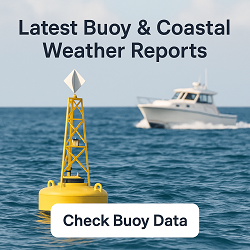Dixie Valley, NV Weather Forecast and Current Conditions
Current Conditions

Feels Like 56°F
at
Current Conditions

Feels Like 56°F
at
Point Forecast at a Glance







This Date in Weather History
1964 - Hurricane Hilda struck Louisiana spawning many tornadoes, and claimed twenty-two lives.
More on this and other weather history
Dixie Valley 7 Day Weather Forecast Details
Friday Oct 3

Day: A chance of showers and thunderstorms. Mostly cloudy, with a high near 63. Northwest wind around 5 mph. Chance of precipitation is 50%.

Night: A chance of showers and thunderstorms before 2am. Mostly cloudy, with a low around 47. West wind around 5 mph. Chance of precipitation is 50%.
Saturday Oct 4

Day: Sunny, with a high near 66. West wind around 5 mph.

Night: Mostly clear, with a low around 40. North wind around 5 mph.
Sunday Oct 5

Day: Sunny, with a high near 67. Northeast wind around 5 mph.

Night: Mostly clear, with a low around 39. Northeast wind 5 to 10 mph.
Monday Oct 6

Day: Sunny, with a high near 71.

Night: Mostly clear, with a low around 41.
Tuesday Oct 7

Day: Sunny, with a high near 73.

Night: Mostly clear, with a low around 43.
Wednesday Oct 8

Day: Sunny, with a high near 76.

Night: Mostly clear, with a low around 45.
Thursday Oct 9

Day: Sunny, with a high near 76.

Night: A slight chance of rain showers after 5am. Mostly clear, with a low around 45.
Sun & Moon Monthly
Sunrise 6:51 AM
Sunset 6:32 PM
Last Light 6:59 PM
Moonset 2:44 AM

Contiguous United States Extremes
Thu's High Temperature
104 at Gila Bend, AZ
Fri's Low Temperature
25 at Angel Fire, NM
Weather Folklore
When parrots whistle, expect rain.
Current subscribers - login to your ClearSky account
About Dixie Valley, Nevada
Dixie Valley, Nevada, was a small ranching town in Churchill County, Nevada until the area was acquired in 1995 by the United States Navy for the Fallon Range Training Complex (FRTC).
The town had no retail businesses, most residents were more than a mile from their nearest neighbor, and a 1-room school (grades 1–8) was the teacher's residence and served as a meeting, dance, and election hall (grades 9–12 were bussed 75 miles to Fallon, Nevada). The abandoned town of Dixie was established at the head of Dixie Valley in 1861 and named by Southern sympathizers.
The population was 49 in 1940.
The medium-sized Dixie Valley geothermal power plant (1988, 66 megawatts) employs ~30 people and has 12 production steam wells and ~24 injection wells.
Content from Wikipedia, licensed under CC BY-SA 3.0.
How We Provide Better Local Weather
Current conditions: We use the nearest available station to your location - including professional MESONET/MADIS and local weather stations - often miles closer than regional airports.
Forecasts: National Weather Service point forecasts predict for your specific area, not broad regional zones, making them far more relevant to your location.

